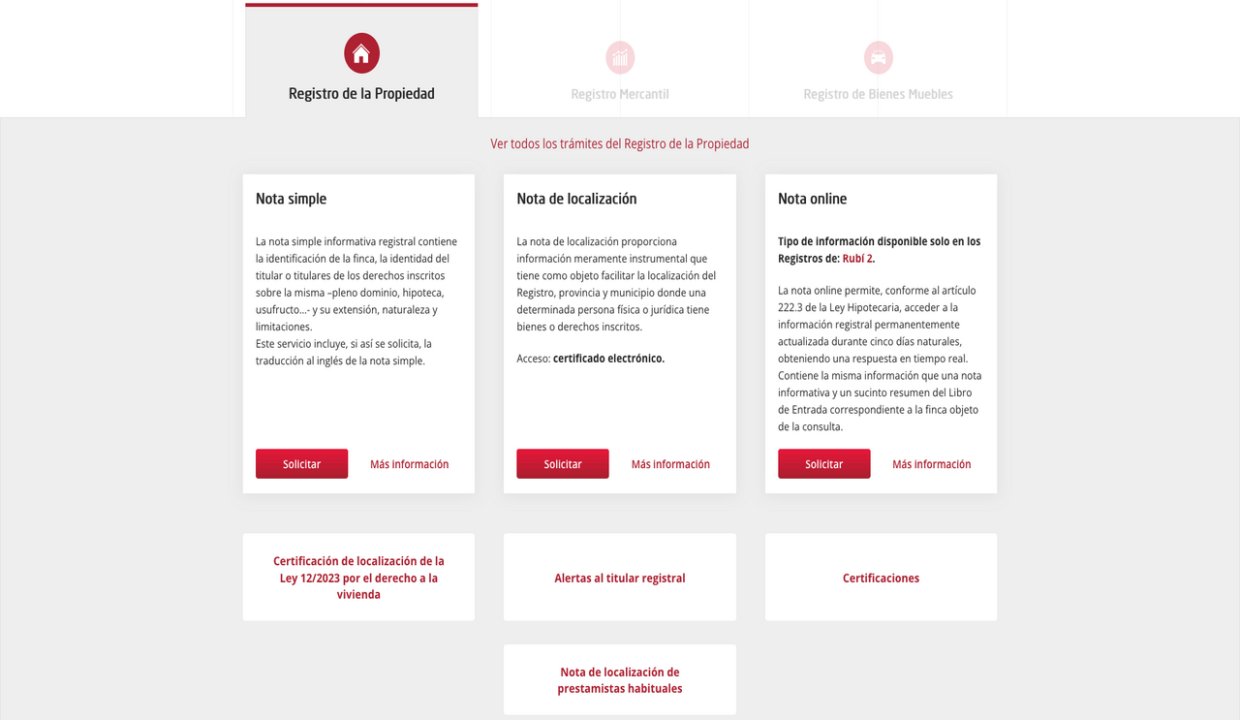The “nota simple” for buying a property in Spain
Inleiding
For foreign investors eyeing the picturesque landscapes of Spain for holiday homes, understanding the “Nota Simple” is akin to decoding a treasure map. This document, issued by the Property Registry, provides essential details about the property, its legal status, and any encumbrances it may carry. Let’s embark on a journey to demystify the “Nota Simple,” ensuring your investment venture is built on solid ground.

Source from nota-simple.es
Unraveling the “Nota Simple”
1. Property Registry Details
- The issuing Property Registry’s identification data, crucial for verifying the document’s authenticity and source.
2. Property Number
- A unique identifier for the property in its specific Property Registry. It’s distinct from the cadastral reference, which is related to tax purposes.
3. IDUFIR (Unique Registry Property Identifier)
- A nationwide unique identifier, ensuring the property’s unmistakable identification across all Spanish Property Registries.
4. Property Description
- An overview of the property, including location, boundaries, size, and ownership share. Discrepancies with the current state may exist due to unregistered alterations.
5. Ownership
- Details on the property’s owners, their share of ownership, and the basis of their title. Older entries might lack comprehensive identification details.
6. Authorizing Notary
- Information on the notary who authenticated the document establishing ownership, including the date and registry entry.
7. Encumbrances
- A list of any charges against the property, notably mortgages, including the amount, creation date, authorizing notary, and registry entry.
8. Issuance Date and Pending Documents
- The date the “Nota Simple” was issued, and a note on whether there are any documents awaiting processing, which could affect the property’s legal status.
Due Diligence Recommendations
- Verify Authenticity: Confirm the document’s issuance by the relevant Property Registry.
- Understand Ownership Structure: Review the listed owners and their shares, ensuring clarity on who holds the rights to the property.
- Check for Encumbrances: Pay special attention to any listed charges or liens, as these could impact your rights and financial obligations.
- Confirm Property Details: Cross-reference the described property features with current conditions, noting any discrepancies that might require legal attention.
- Legal Representation: Consider hiring a local real estate lawyer to navigate the complexities of Spanish property law and to ensure all due diligence is thoroughly conducted.
Conclusie
The “Nota Simple” is a critical compass guiding your journey through the purchase of a holiday home in Spain. Like astronauts meticulously planning their voyage through the cosmos, foreign buyers must navigate the legal landscape of Spanish real estate with care and precision. Understanding the “Nota Simple” illuminates your path, safeguarding your investment against unforeseen obstacles.
“Exploring the realms of Spanish real estate is akin to voyaging through space: armed with the right knowledge and tools, each step brings you closer to discovering your own piece of paradise among the stars.”
The due diligence process in purchasing Spanish property is not just about checking boxes; it’s about ensuring that every detail aligns with your vision of a holiday home, making your investment journey not only safe but also rewarding.
The due diligence process in purchasing Spanish property is not just about checking boxes; it’s about ensuring that every detail aligns with your vision of a holiday home, making your investment journey not only safe but also rewarding.

